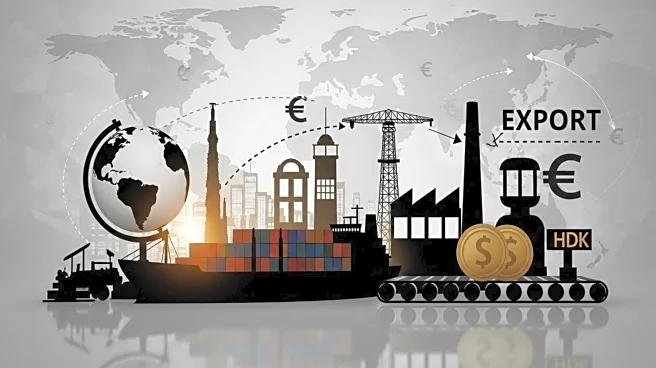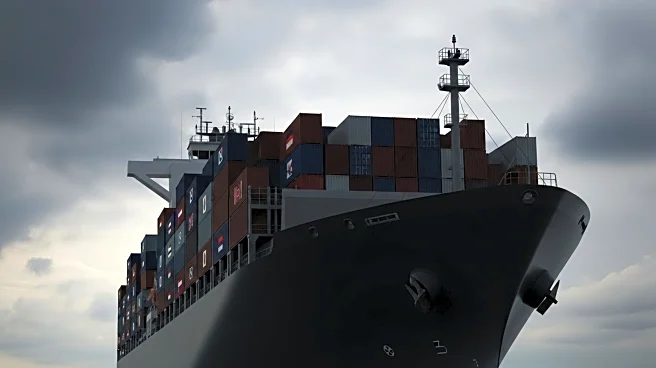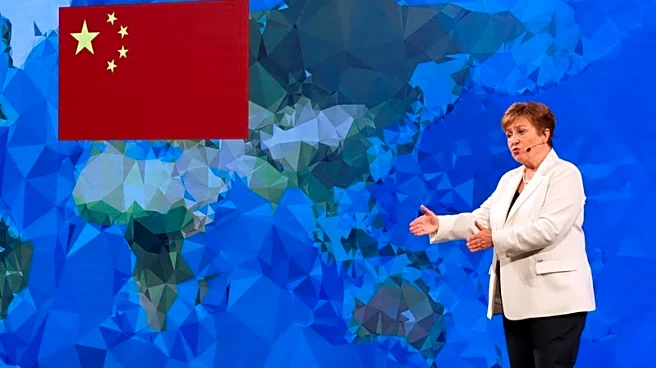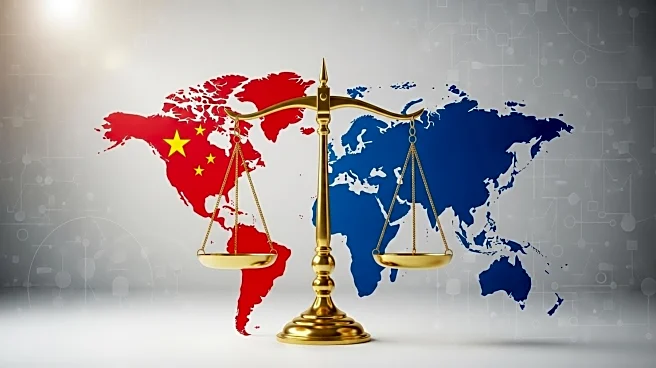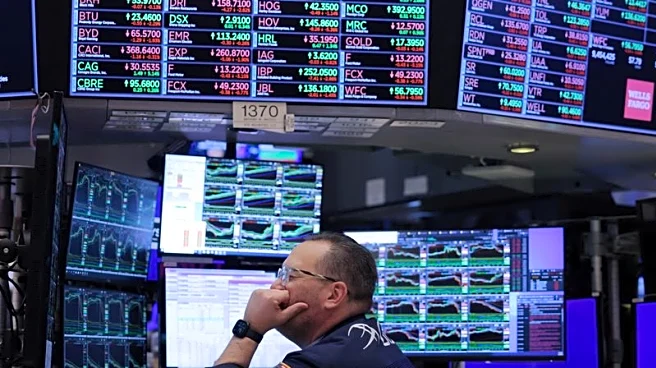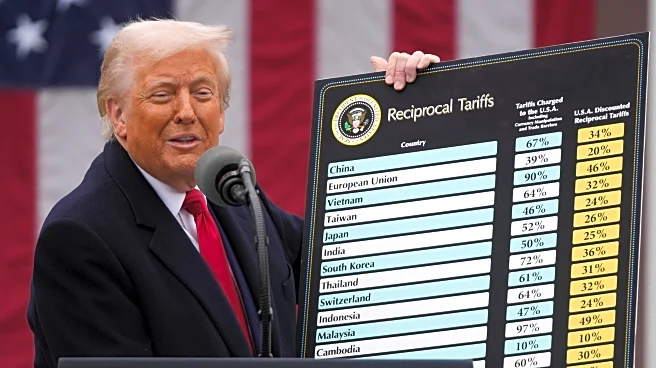What is the story about?
What's Happening?
President Trump initially believed that imposing tariffs on China would force Beijing to make concessions due to its reliance on U.S. consumers. However, recent data indicates that China has successfully diversified its export markets, leading to significant growth despite the trade tensions. According to the General Administration of Customs, China's exports to the U.S. fell by 27% in September, marking the sixth consecutive month of double-digit declines. In contrast, exports to non-U.S. countries, such as the European Union, grew by 14.8%, contributing to an overall export increase of 8.3% year-over-year, totaling $328.6 billion for September. The World Bank has revised its growth expectations for China's economy, projecting a 4.8% growth in 2025, up from the previous estimate of 4%. Meanwhile, the U.S. growth forecast has been reduced to 1.4% for the same period.
Why It's Important?
The shift in China's export strategy highlights the limitations of unilateral tariff policies and underscores the interconnected nature of global trade. By diversifying its export markets, China has mitigated the impact of U.S. tariffs, challenging the effectiveness of President Trump's approach. This development could influence future trade negotiations and economic policies, as the U.S. may need to reconsider its strategy to address trade imbalances. The situation also reflects broader geopolitical dynamics, as China strengthens its economic ties with other regions, potentially reducing its dependency on the U.S. market. This could have long-term implications for U.S. businesses and consumers, who may face higher prices and reduced access to Chinese goods.
What's Next?
With both countries operating under a pause on reciprocal tariffs until November 10, there is potential for further negotiations. President Trump has expressed optimism about reaching an agreement with China, citing his relationship with President Xi Jinping. Analysts suggest that the current tensions may be part of a broader negotiating tactic, with room for compromise still possible. The market is beginning to price in the probability of a deal, as indicated by futures climbing following Trump's comments. Observers will be watching closely for any developments in the trade talks, which could impact global economic stability and bilateral relations.
Beyond the Headlines
The ongoing trade tensions between the U.S. and China raise questions about the ethical and strategic dimensions of using tariffs as a tool for economic leverage. The situation highlights the need for a balanced approach that considers the interests of all stakeholders, including consumers, businesses, and governments. Additionally, the diversification of China's export markets may lead to shifts in global supply chains, affecting industries and economies worldwide. As China continues to expand its influence, the U.S. may need to adapt its policies to maintain its competitive edge in the global market.
AI Generated Content
Do you find this article useful?
